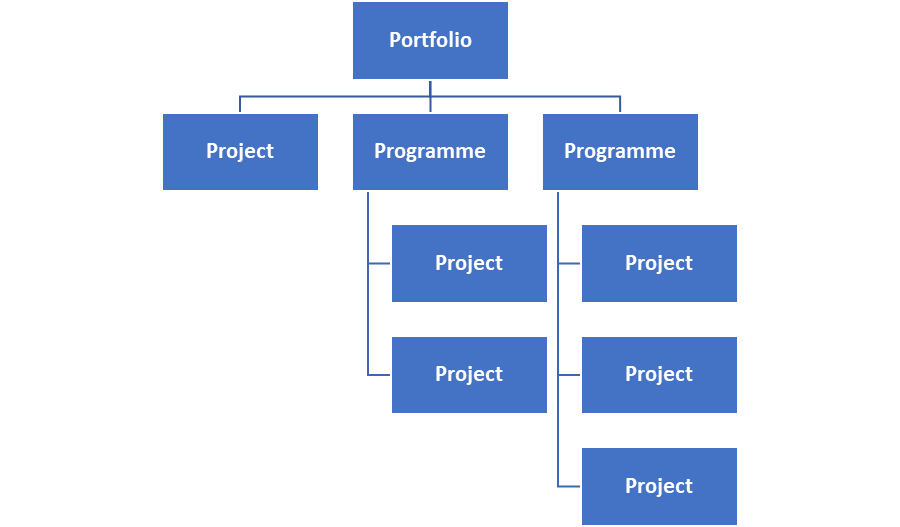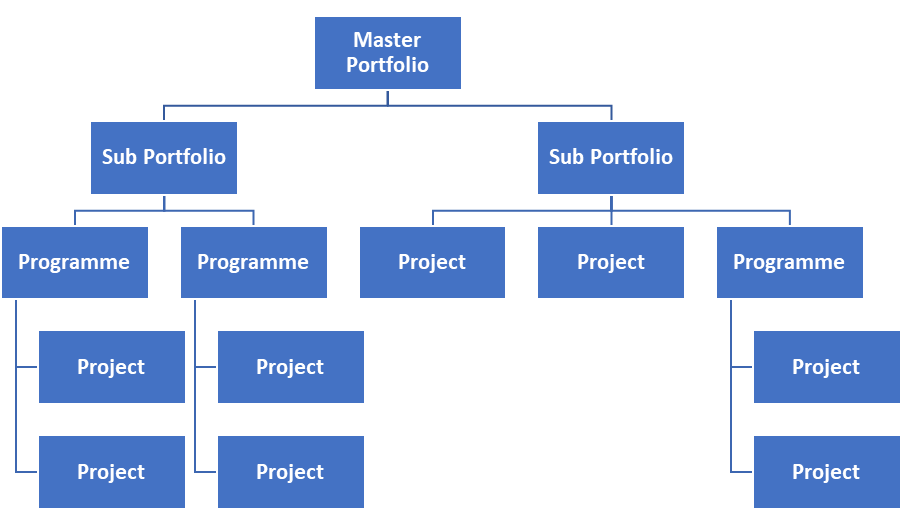Project Portfolios
A project portfolio covers all change initiatives (projects and programmes) in an organization. Projects in the portfolio may or may not be grouped together into programmes. In larger organizations, it is common to see programmes that combine to form a project portfolio.
Portfolio management is the process of ensuring all change initiatives are delivered in line with the organisational strategy.
Definition of a Portfolio
A portfolio is defined as the totality of an organization’s investment (or segment thereof) in the changes required to achieve strategic objectives. The main aim of creating a portfolio is to achieve the organization’s strategic aims and goals.

An organization can have more than one portfolio. This is common in very large organizations. Unlike projects and programmes, portfolios are not time-limited. The portfolio office will continue to exist until the senior management decides otherwise.

If an organization has created sub-portfolios, then the sub-portfolios should be implemented and managed consistently with the organizational portfolio.
Investment and Strategic Objectives
This definition mentions two terms – investment and strategic objectives. Projects are used to contribute to an organization’s goals some way. On the other hand, portfolio management is about the strategic view. The definition also includes the term “totality of investment”, which means that a portfolio should include all the business change initiatives, except those which do not significantly contribute to the organizational strategy – for example, operational enhancements.
We should create a portfolio with the following aims:
- Projects (and programmes) that are in progress and projects that are in the pipeline, are provided resources optimally, by prioritizing resource allocation according to organization’s strategic goals and perceived risks.
- The portfolio contains all projects (and programmes) that are necessary to achieve the organization’s strategic goals and the projects are sufficient to achieve these goals.
- Projects (and programmes) within the portfolio are delivered effectively, with desired benefits that contribute to the organization’s strategic goals being realized.
Projects within a Portfolio Context
Projects generate benefits that are helpful to achieve one or more objectives at a time. Projects (and indeed, programmes) are the means of achieving change and they form a very important part in portfolio management. Some of the important things that portfolio management does to project management are:
- Managing aggregate risks: some projects may encompass high risks while some may carry low risks. Actions taken to mitigate the risks of one project might impact other projects. This is called risk shifting. Risk shifting happens when a project successfully manages its own risk, as far as that specific project is concerned, but the strategy used for managing the risk has affected some other project or affected some other part of the business. Portfolio management ensures this is under control.
- Managing limited resources: All resources are limited - be it people, machinery or material. Out of these, people are by far the most valuable and most scarce resource. Project managers for each project may request valuable resources as and when they need them, because their natural priority is their own project. This is when portfolio management steps in, looks at how each project contributes to the organization’s strategy and allocates valuable resources to the right project.
- Managing dependencies: Projects always have dependencies. Dependencies are both internal and external. Dependencies within projects are pretty much under the control of the project manager. Finish task A and start task B. But what happens when there are dependencies between projects? Task A, which is part of Project Z needs to be completed for Project Y to start task B. These are called logical dependencies, which require portfolio management intervention to handle.
Written by Inham Hassen
This wiki is developed and managed by an accredited trainer, independent of AXELOS. While aligned with their guidelines, it’s not an official resource.